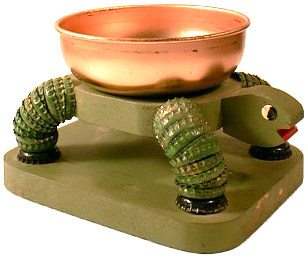After my visit to Waverley Station yesterday, where we had to draw 'the atmosphere', I delved into the subject that is essential for visual art... light!
Just to name a few examples;
Movie-making: Camera, Light, ... Action
Drawing: Draw Black or White where there is Darkness or Light
Photography: It's the Light that makes the Photo
Coloring: Colors are the Result of the Prism of Light
So my craftsmanship needed some research on physics. Here we go...
I had started by making a picture of the stairs that lead upward to the bridge across the street.

Waverley Station - Edinburgh
Phase One - Values of LightThe first thing when starting to draw for painting is closing your eyes.... but not all the way, you sleepy! Just a little bit. Or as the Scottish would say; "a wee bit".
Your focus is on light versus dark and the shades of gray...
A
shade is a combination of white and black to produce a particular shade of gray. All of the shades of gray between white and black are values, and when used together are also called gradations.

Shades, courtesy of Andrew Kator
So what’s value good for? Value is great for suggesting volume, creating spacial effects, changing mood, creating visual interest, and changing impact.

Waverley Station in gradations
Next, look through the blinds of your eyelashes and look for contrast.
Contrast describes the range of gradation between different values. Let's look at the pole at the bottom of the stairs for contrast with the floor.

Detail of stairs to show contrast (sorry for the low resolution)
A balanced image will have the most values between white and black. A high contrast image has fewer gradations. A low contrast image is missing the ends of the spectrum, white and black and the values closest to them.
High contrast is often used for greater impact; lower contrast can quiet things down and even create harmony.
Increasing the contrast of objects in the
foreground of an image, and
decreasing the contrast of objects in the
background, can create more spacial effects.

Detail of stairs with spacial effects.
Now lets suggest volume and space by use of value.
What’s the difference between drawing a circle and a ball? Value.

Because of the way the human brain interprets the world, value can be used to create the illusions of volume and space.
People naturally interpret that lighter values indicate a light source. By using shading our flat circle is instantly given volume, and becomes a sphere.
Shading and value can also be used to create shadows, further adding the suggestion of space and volume. Without shadows the sphere is floating in space. Lighter changes in value are also used at the far right edges of the sphere to suggest that light is being reflected back from a surface.
Why does the sphere with shading work to represent volume and space? The shadow matches the shape of the sphere and the shadow is off-centered to the left to match the direction of the “light source” which appears to be coming from the top-right. If the shadow were dead centered beneath the sphere, it wouldn’t match the lighting direction and would be less convincing.
Problems with drop-shadows or combining multiple photographs into one image are often caused by the light-source not matching the shading and shadow.
Psychology and Value?
Value and contrast can also be used to change the mood of an image or design. A good example is old vampire movies and how the underexposed and dark scenes created a sense of danger. The next time you watch a horror movie or a sci-fi movie with a bleak subject, notice how the use of darker values and contrast are applied throughout the movie to affect mood.

Lugosi, Bela (Dracula) - Horror by high contrast
From the very beginning of the movie the titles will often use value as a technique to set the mood for the audience. It wouldn’t be a good idea to use that technique when trying to create an advertisement for laundry detergent.
Another time to avoid using many darker values is when creating a presentation for a lecture, since excessive use can lead to a cranky and disinterested audience. An audience can actually be encouraged to pay more attention by slightly tweaking images to create higher contrast (just don’t go overboard).
On the flip side, value can be used to create a more soothing and relaxed effect. Look for this technique in television programming that is targeted to calming viewers.

As The World Turns - Happiness by low contrast
Some instructional, gardening, home-oriented, and “feel-good” shows tone down the contrast, especially the extreme lights and darks.
Value is just one of the basics for creating good design and modifying images.


















































